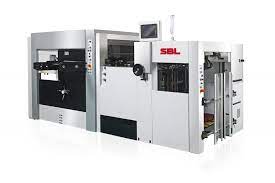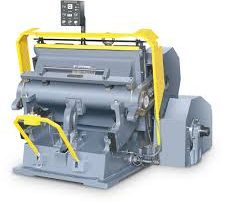The Evolution and Impact of Die-Cutting Technology in Modern Manufacturing
The advent of die-cutting technology has been a game-changer in the landscape of manufacturing, offering unparalleled precision and efficiency in the production of various items. This technology, integral to industries such as packaging, automotive, and electronics, enables the cutting of materials into specific shapes and designs with meticulous accuracy. As we delve into the evolution of die-cutting machines and their significant impact on modern manufacturing, it becomes evident how these devices have transformed industrial production methods.
Historical Overview of Die-Cutting
Die-cutting’s origins trace back to the leather industry, where early versions of these machines were used to cut leather more efficiently than manual methods. Over time, the technology evolved, expanding its applications beyond leather to include paper, plastic, metal, and fabric. This expansion was driven by the need for precision in mass-produced items, leading to the development of more sophisticated and automated die-cutting machines.
Modern Die-Cutting Machines: Features and Functions
Today’s die-cutting machines are highly advanced, featuring automated systems that allow for rapid production without sacrificing quality. These machines are capable of handling a wide range of materials, thicknesses, and sizes, making them versatile tools in manufacturing. Key features include digital interfaces that enable precise control over the cutting process, as well as the ability to integrate with computer-aided design (CAD) software for creating intricate patterns and shapes.
Advantages of Die-Cutting in Manufacturing
The primary advantage of using die-cutting machines in manufacturing is the ability to produce complex shapes with high precision and consistency. This not only enhances the aesthetic appeal of products but also ensures their functionality and fit, especially in industries where components must align perfectly. Additionally, die-cutting technology offers the benefit of scalability, allowing manufacturers to easily adjust production volumes based on demand.
Environmental and Economic Impact
Die-cutting technology also plays a significant role in promoting sustainability in manufacturing. By maximizing material utilization and minimizing waste, die-cutting machines contribute to more efficient production processes. This not only helps in reducing the environmental footprint of manufacturing but also leads to cost savings, as less material is wasted during the production cycle.
Future Trends in Die-Cutting Technology
As manufacturing continues to evolve, so too does die-cutting technology. Future developments are expected to focus on increasing automation, improving precision, and expanding the range of materials that can be processed. Innovations such as laser die-cutting and the integration of artificial intelligence (AI) for optimized cutting paths are on the horizon, promising to further enhance the capabilities and applications of die-cutting machines.
Conclusion
Die-cutting technology has revolutionized manufacturing, providing industries with the tools to create precise and complex shapes efficiently. Its evolution from manual leather cutting to advanced automated systems illustrates its adaptability and importance in modern production processes. As technology continues to advance, die-cutting machines will undoubtedly remain at the forefront of manufacturing innovation, driving improvements in product quality, environmental sustainability, and production efficiency.



